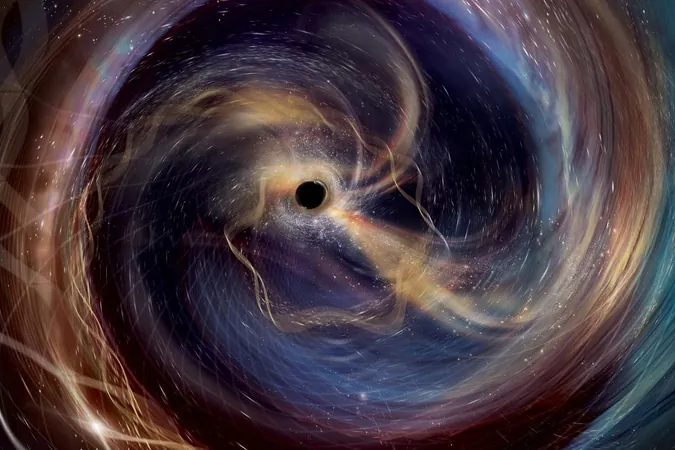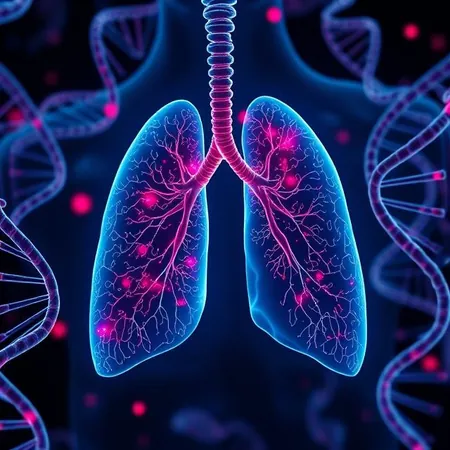
Black Hole Collision Confirms Hawking's Pioneering Theory
2025-09-10
Author: Li
A Historic Cosmic Collision
In a groundbreaking revelation, scientists announced on September 10 that gravitational waves generated by the collision of two black holes have validated a theory put forth by Stephen Hawking over five decades ago. These rippling waves, which traverse the fabric of spacetime, were first detected by the Laser Interferometer Gravitational-Wave Observatory (LIGO) in 2015, solidifying predictions made by Albert Einstein in his 1916 theory of general relativity.
Revolutionary Discoveries in Gravitational Waves
Since their initial discovery, LIGO and its global collaborators—part of the LVK network—continue to unveil these cosmic events with remarkable frequency, detecting a new black hole merger approximately every three days. However, the most recent event recorded on January 14 was highlighted as "the loudest gravitational wave event we have detected to date," according to LIGO team member Geraint Pratten from the University of Birmingham.
From a Whisper to a Roaring Revelation
The latest detection was likened to "a whisper becoming a shout," echoing the first detection a decade ago. Both events involved titanic black hole collisions, each boasting masses between 30 and 40 times that of our Sun, occurring around 1.3 billion light-years from Earth. Yet, advances in technology have significantly reduced background noise, allowing scientists to extract clearer data.
Hawking's Hypothesis Holds Strong
In 1971, Stephen Hawking made a bold prediction: the event horizon of a black hole, the boundary from which nothing can escape, cannot diminish in size. This means that the newly formed black hole from a merger must possess an equal or greater surface area compared to the original black holes. Researchers investigating the January merger, termed GW250114, were able to prove Hawking's theory correct.
The Scale of the Megablack Hole
Before their collision, the black holes spanned a surface area equivalent to around 240,000 square kilometers, roughly the size of the United Kingdom. Post-merger, the resulting mega-black hole expanded to an impressive 400,000 square kilometers, comparable to the size of Sweden. Calculating this post-merger surface area presented a unique challenge to scientists.
Ringing Down to New Realities
The merging black holes create ripples in spacetime called gravitational waves, and this process enters what scientists term the "ringdown phase," where the newly formed black hole resonates like a struck bell. This phenomenon, also predicted by Einstein, enabled researchers to measure different frequencies emanating from the black hole, allowing them to correctly ascertain its final size.
Validating Kerr's Theory
Additionally, this discovery corroborated the predictions of mathematician Roy Kerr, who theorized in 1963 that two black holes with identical masses and spins would be mathematically identical. assistant professor Maximiliano Isi of Columbia University emphasized that the clarity of the GW250114 signal allowed researchers to discern two distinct frequencies, confirming Kerr's predictions.
Looking Ahead: The Quest for Knowledge Continues
As researchers delve deeper into the mysteries of black hole mergers, preparations are underway for new gravitational wave detectors, including an ambitious project in India. These advancements promise to unlock further knowledge about the universe's most enigmatic phenomena, continuing the legacy of giants like Einstein and Hawking.




 Brasil (PT)
Brasil (PT)
 Canada (EN)
Canada (EN)
 Chile (ES)
Chile (ES)
 Česko (CS)
Česko (CS)
 대한민국 (KO)
대한민국 (KO)
 España (ES)
España (ES)
 France (FR)
France (FR)
 Hong Kong (EN)
Hong Kong (EN)
 Italia (IT)
Italia (IT)
 日本 (JA)
日本 (JA)
 Magyarország (HU)
Magyarország (HU)
 Norge (NO)
Norge (NO)
 Polska (PL)
Polska (PL)
 Schweiz (DE)
Schweiz (DE)
 Singapore (EN)
Singapore (EN)
 Sverige (SV)
Sverige (SV)
 Suomi (FI)
Suomi (FI)
 Türkiye (TR)
Türkiye (TR)
 الإمارات العربية المتحدة (AR)
الإمارات العربية المتحدة (AR)